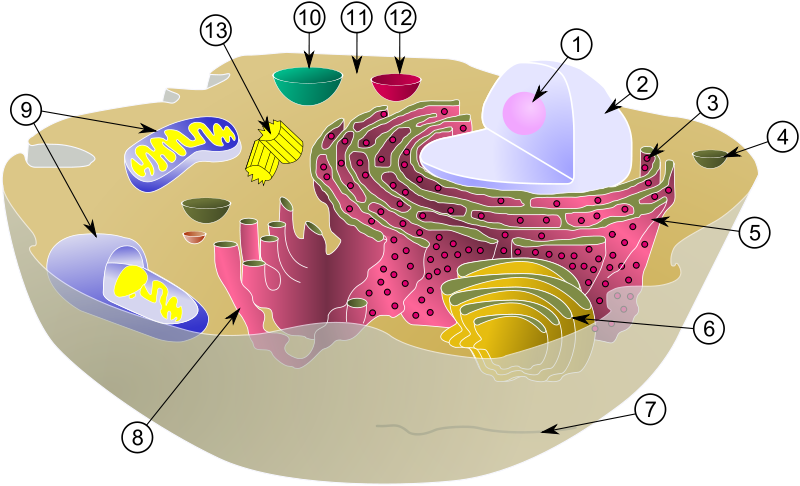Cytoplasm

|
WikiDoc Resources for Cytoplasm |
|
Articles |
|---|
|
Most recent articles on Cytoplasm |
|
Media |
|
Evidence Based Medicine |
|
Clinical Trials |
|
Ongoing Trials on Cytoplasm at Clinical Trials.gov Clinical Trials on Cytoplasm at Google
|
|
Guidelines / Policies / Govt |
|
US National Guidelines Clearinghouse on Cytoplasm
|
|
Books |
|
News |
|
Commentary |
|
Definitions |
|
Patient Resources / Community |
|
Patient resources on Cytoplasm Discussion groups on Cytoplasm Directions to Hospitals Treating Cytoplasm Risk calculators and risk factors for Cytoplasm
|
|
Healthcare Provider Resources |
|
Causes & Risk Factors for Cytoplasm |
|
Continuing Medical Education (CME) |
|
International |
|
|
|
Business |
|
Experimental / Informatics |
Editor-In-Chief: C. Michael Gibson, M.S., M.D. [1]
Overview
Cytoplasm is a gelatinous, semi-transparent fluid that fills most cells. Eukaryotic cells contain a nucleus that is kept separate from the cytoplasm by a double membrane layer.
Constituents
The cytoplasm has three major elements; the cytosol, organelles and inclusions. The cytosol is the gooey, semi-transparent fluid in which the other cytoplasmic elements are suspended. The cytoplasm holds organelles and protects them, such as the vacuole, endoplasmic recticulum, etc. Cytosol makes up about 70% of the cell and is composed of water, salts and organic molecules.[1] The cytoskeleton, various proteins, ribosomes and enzymes that are necessary for the cell to catalyze reactions are also found throughout the cytosol. The inner, granular and more fluid portion of the cytoplasm is referred to as endoplasm.
The organelles are the metabolic machinery of the cell and are like little organs themselves. Some major organelles that are suspended in the cytosol are the mitochondria, the endoplasmic reticulum, the Golgi apparatus, lysosomes, and in plant cells chloroplasts. The inclusions are chemical substances that store nutrients, secretory products and pigment granules. [2]
Function
The cytoplasm is the site where most cellular activities are done. The functions for cell expansion, growth and replication are carried out in the cytoplasm of the cell. The cytosol has enzymes that take molecules and break them down , so that the individual organelles can use them as they need to. The cytosol also contains the cytoskeleton which gives the cell its shape and can help in the movement of the cell.[3]
References
- ↑ Cytoplasm Composition
- ↑ Cytoplasm - Filling Fluid - from Biology4Kids.com
- ↑ Cytoplasm
Additional Resource
- Alberts, Bruce et al. (2003). Essential Cell Biology, 2nd ed., Garland Science, 2003, ISBN 081533480X.
External links
- Human Anatomy & Physiology, seventh edition By; Elain N Marieb and Latja Hoehn.
- What is cytoplasm? - by Genevieve Thiers -2002
- Glencoe Science Biology The Dynamics of Life
ar:هيولى (خلية) bn:সাইটোপ্লাজম bs:Citoplazma bg:Цитоплазма ca:Citoplasma cs:Cytoplazma da:Cytoplasma de:Zytoplasma et:Tsütoplasma eo:Citoplasmo ko:세포질 hr:Citoplazma id:Sitoplasma it:Citoplasma he:ציטופלזמה lv:Citoplazma lb:Zytoplasma lt:Citoplazma hu:Citoplazma mk:Цитоплазма ms:Sitoplasma nl:Cytoplasma no:Cytoplasma oc:Citoplasma sq:Citoplazma simple:Cytoplasm sk:Cytoplazma sl:Citoplazma sr:Цитоплазма sh:Citoplazma fi:Solulima sv:Cytoplasma uk:Цитоплазма